|
Welcome to October's issue of the Dereila Nature Inn newsletter.
We enjoy one last look at the golden colours of autumn
before the leaves fall and the winter snows arrive. |
Greetings
~~~~~~~~~~~~~~~~~~~~~~~~~~~~~~~~~~~~~~~~~~~~~~~~~~~~~~
Welcome to another edition of Whispers, the newsletter of the Dereila Nature Inn where we celebrate nature and photography. We hope you enjoy this latest issue of photographs, trivia, news and tips. Thanks for subscribing and supporting our project! |
|
Trivia Time
~~~~~~~~~~~~~~~~~~~~~~~~~~~~~~~~~~~~~~~~~~~~~~~~~~~~~~~
Which tree is still with us today but at one time was feeding the dinosaurs?
You'll find the answer at the end of the newsletter.
|
What's This?
~~~~~~~~~~~~~~~~~~~~~~~~~~~~~~~~~~~~~~~~~~~~~~~~~~~~
Time to test your detecting skills! Can you figure out what this close-up and cropped image is? You'll find the answer at the end of the newsletter.
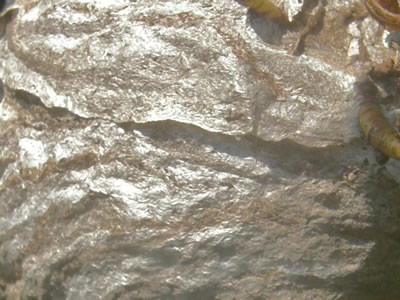
|
| New Features at the Inn
~~~~~~~~~~~~~~~~~~~~~~~~~~~~~~~~~~~~~~~~~~~~~~~~~~~
Here are the latest features at the Inn we hope you'll enjoy. Clicking on the images will take you straight to the page. 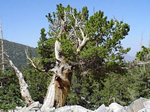 State and Provincial Trees
On this page you'll see which trees have been selected as symbols of provinces and states.
Wildflowers at-a-Glance
We've explained and updated our At-a-Glance guides to wildflowers. They are arranged by colour:
|
Contributed by... ~~~~~~~~~~~~~~~~~~~~~~~~~~~~~~~~~~~~~~~~~~~~~~~~~~~~~~
We invite you to submit nature photographs to this part of our newsletter.
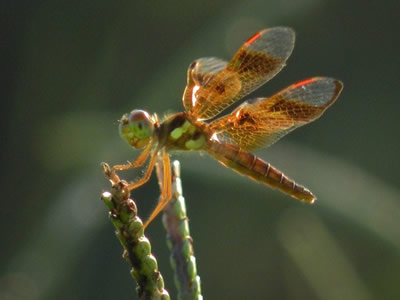
These two photographs were sent in by Deb Smith from Summerville, SC.
The top image is an Eastern Amberwing, Perithemis tenera, while
the second is a Halloween Pennant, Celithemis eponina.
In an amazing coincidence, we received another great
photograph this month of the exact same species!
This Halloween Pennant was sent in by Nancyj Hovey.
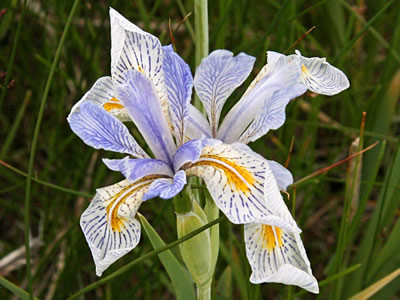 Frequent contributor Margaret Straley of Spencer, WV, submitted this pretty image of a Rocky Mountain Iris taken in Yellowstone National Park. 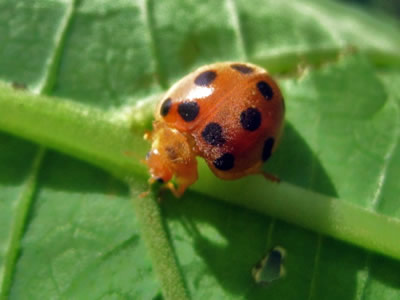 A ladybug journeys across a leaf in Genting Highlands, Malaysia.
This was sent to us from Malaysia by Frank Kilkelly.
This is a great addition to our talented subscribers.
Many, many thanks for sending in your wonderful photographs!
If you would like to see your nature images in our members' section, simply send us an e-mail. We'd love to hear from you! |
| Monthly Selections
~~~~~~~~~~~~~~~~~~~~~~~~~~~~~~~~~~~~~~~~~~~~~~~~~~~~~~
Here are this month's choices: Insect - Blue Dasher Dragonfly; Wildflower - Chocolate Lily; Bird - Spotted Towhee. 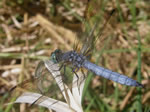 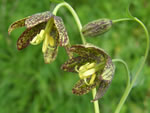 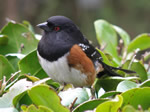
Simply click on the images to visit the pages.
You can also check out the archives as they're just a click away:
Wildflower Archives | Bug Archives | Bird Archives |
| The Wandering Image
~~~~~~~~~~~~~~~~~~~~~~~~~~~~~~~~~~~~~~~~~~~~~~~~~~~~~~
This month we wandered along the beach at low tide on Vancouver Island and came across a very interesting organism.
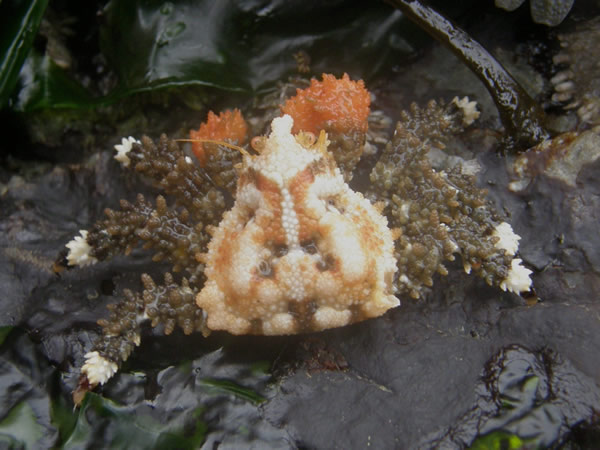
This is a rare Heart Crab, Phyllolithodes papillosus, so-named because of the shape of the upper part of its shell. You'll also notice its legs are covered with spikes. |
Snippets in Nature ~~~~~~~~~~~~~~~~~~~~~~~~~~~~~~~~~~~~~~~~~~~~~~~~~~~~~~
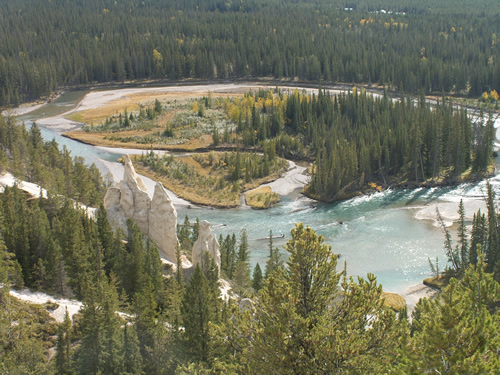
In Alberta's Banff National Park the Bow River flows gently along.
You'll notice some curious formations on the escarpment.
Although more associated with deserts or badlands, hoodoos can be formed wherever conditions are ideal. In the Bow River valley soft rock has been eroded away by water and wind and harder rock has been left behind creating these fascinating features. Eventually however, they will collapse and fall down but in the meantime new hoodoos are being sculptured and created just as these once were.
To see more scenery and take a virtual tour of Banff National Park from our series of Special Places in the Natural World, click here. |
| Caption This!
~~~~~~~~~~~~~~~~~~~~~~~~~~~~~~~~~~~~~~~~~~~~~~~~
This Robber Fly found itself in a bird's water dish and the resulting picture needs a funny caption. Do you have any suggestions? We've given you a couple of ideas.
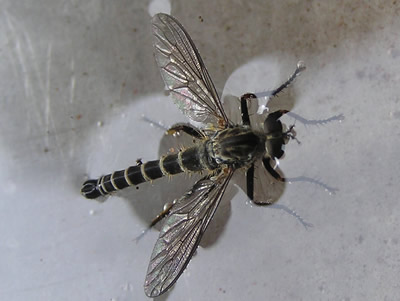
Number one: "Help! Somebody help! I can't swim!"
Number two: "Get me out of here!"
If this photo inspires you, please send us an e-mail. We'd love to hear from you and add your caption to our collection. You can visit the rest of the collections at the Inn: The Mammals| The Birds | The Insects |
Behind the Name
~~~~~~~~~~~~~~~~~~~~~~~~~~~~~~~~~~~~~~~~~~~~~~~~

Yellow Willowherb has the scientific name Epilobium luteum. Epi comes from the Greek meaning upon and lobus refers to the pod. This is in reference to the sepals and petals on the top of the long fruit. "Luteum" refers to the yellow flowers.
|
|
Joke of the Month ~~~~~~~~~~~~~~~~~~~~~~~~~~~~~~~~~~~~~~~~~~~~~~~~~~~~
A fellow was on the TV program Who Wants to be a Millionaire? He had done very well so far. For the million dollars he had one life-line left so he could phone a friend for help. Everything was riding on this last question.
"I'll have a go," he said.
"Okay," said the presenter. "Which is of following birds does not build its own nest: a) the sparrow, b) the thrush c) the magpie or d) the cuckoo?"
"Mmm. I'll have to phone my friend Charlie. He'll know."
On the phone Charlie said, "That's easy. It's the cuckoo."
"Are you sure?"
"Yep! I'm sure. The cuckoo."
The contestant hung up and said, "I'll go with cuckoo as my final answer."
"That's the correct answer!" screamed the presenter. "You've won a million dollars! Congratulations!"
Later the new millionaire invited his friend out to celebrate and thank him.
"Tell me Charlie, how did you know that the cuckoo doesn't build its own nest?"
"Oh, it was simple. Everyone knows cuckoos live in clocks."
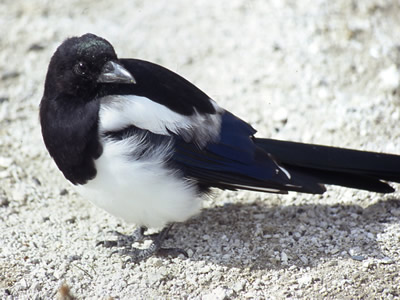
"I'm glad you didn't think I do things like that!" |
| Notes, News and Tips from Around the Inn
~~~~~~~~~~~~~~~~~~~~~~~~~~~~~~~~~~~~~~~~~~~~~~~~~~~~
Photos Wanted!We are looking for a few images to help complete one of this month's new features, State and Provincial Trees. In an image of the whole tree it is often very difficult to see much of the details, we are using small sections of each tree such as this which is Colorado's state tree, the Colorado Blue Spruce, Picea pungens.
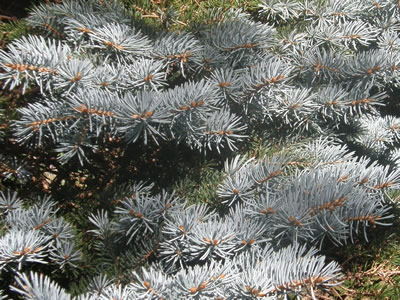
If you have any images of the trees that we require we would appreciate hearing from you. These are the missing ones:
Arkansas - Loblolly Pine, Pinus taeda
California - Redwood, Sequoia sempervirens
Louisiana - Bald Cypress, Taxodium distichum
Minnesota - Red Pine, Pinus resinosa
New Mexico - Pinyon, Pinus edulis
Ohio - Ohio Buckeye, Aesculus glabra
South Dakota - White Spruce, Picea glauca
Texas - Sweet Pecan, Carya illinoensis
Wyoming - Plains Cottonwood
New Brunswick - Balsam Fir, Abies balsamea.
Newfoundland - Black Spruce, Picea mariana
N W. Territories - Jack Pine, Pinus banksiana
Nova Scotia - Red Spruce, Picea rubens
Quebec - Yellow Birch, Betula alleghaniensis
Reminder from the Inn
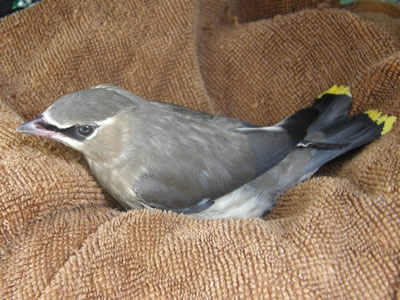
Have you ever had a bird fly into your window? Sometimes a servere hit can leave a bird stunned and it will need a safe place to recover for a while, just like this waxwing.
A simple towel in a safe and calm location can provide the bird with a secure resting and recovering area.
After a while, when they are ready to continue life, they will simply leave.
Tips from the Inn
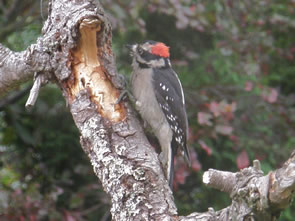
If you can, place your suet feeder close to a tree limb. You'll be surprised at how many photo opportunities arise as the birds wait for a moment, checking things out as they approach. We've got lots more tips for attracting birds in our Tips and Tricks for the Backyard Birder section.
Picture of the Week

Be sure to drop by the Inn every week to see the latest Picture of the Week. You can also do so by clicking on the image to the left or by clicking here.
Past Issues
We upload past issues of Whispers as new ones are issued. You can view them all with a simple click here. |
Did You Know...
~~~~~~~~~~~~~~~~~~~~~~~~~~~~~~~~~~~~~~~~~~~~~~~~
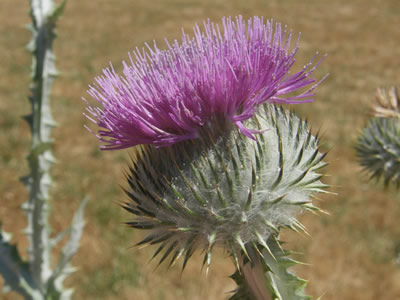
Did you know that the Scotch Cotton Thistle, Onopordum acanthium, is the emblem of Scotland? The story behind this humble weed being selected for such an honour is that a sleeping group of Scottish warriors were awakened in time to repel a band of invading Vikings. They were woken up by the cries of a Danish viking who, advancing in bare feet so as not to disturb the Scots, stepped on some of these thistles. In gratitude, the plant became known as the Guardian Thistle and adopted as the symbol of Scotland. |
| Trivia Answer
~~~~~~~~~~~~~~~~~~~~~~~~~~~~~~~~~~~~~~~~~~~~~~~~~~~~
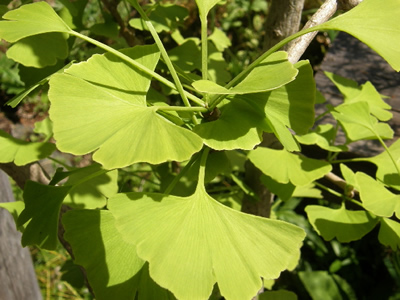
The Ginkgo tree, Ginkgo biloba, is considered to be a living fossil,
descended from ancesters which lived millions of years ago. |
| What's This?
~~~~~~~~~~~~~~~~~~~~~~~~~~~~~~~~~~~~~~~~~~~~~~~~~~~~
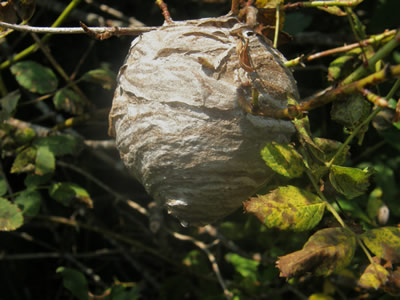
Here we reveal the answer to our mystery photo.
It's the nest of a Bald-faced hornet. |
| Nature Notes
~~~~~~~~~~~~~~~~~~~~~~~~~~~~~~~~~~~~~~~~~~~~~~~~

|
|
Spread the Word ~~~~~~~~~~~~~~~~~~~~~~~~~~~~~~~~~~~~~~~~~~~~~~~~~~~~~~~~~
We hope you've enjoyed this month's newsletter. Please spread the word about our project by passing on our website information to friends and other nature lovers. You can also forward this newsletter by clicking on the "forward e-mail" link at the bottom of this newsletter. Your ideas and suggestions are always welcome. Send us an e-mail!
Until next time, best wishes from your friends at the Dereila Nature Inn - the Cyber Nature Centre for Nature Lovers. Watch for the next issue of Whispers in your inbox during the first week of November. |
|